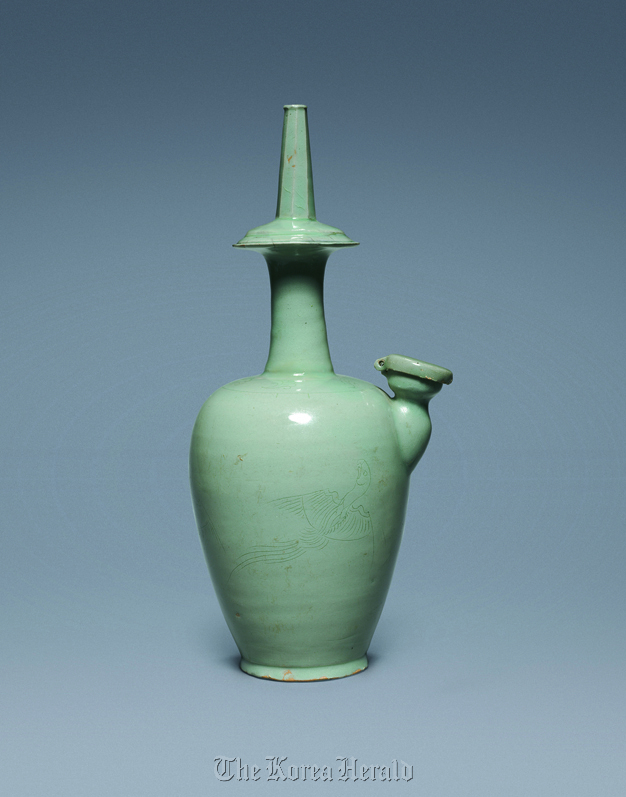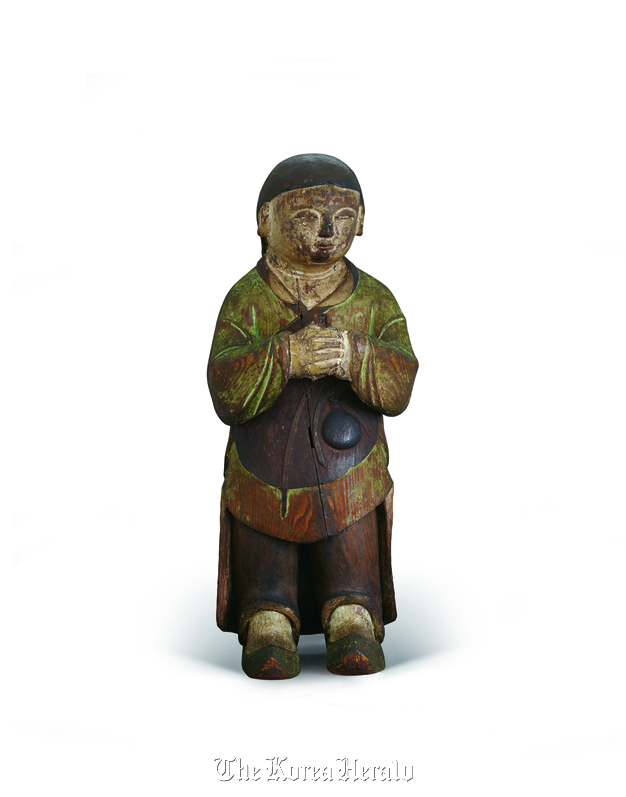National Museum exhibition’s 86 items are mostly from Joseon period, many of them gifts by the royal court
In 19th century Joseon, a number of foreign envoys enjoyed the privilege of receiving gifts from the royal court. Most of them received some exquisite celadon pieces from Korea’s Goryeo Kingdom ― known for their distinctive bluish-green color ― as gifts from the Joseon royals. One of the fortunate foreigners who enjoyed such a privilege was Horace G. Underwood (1851-1921), the founder of Joseon Christian College, predecessor to today’s Yonsei University in Seoul.
The public will be offered a chance to see his celadon piece ― assumed to have been given to Underwood by the 19th century Joseon court ― at the National Museum of Korea’s current exhibition, “Korean Art from the United States.”
The show features a total of 86 artifacts that are currently housed in nine U.S. museums and their Korea-themed galleries, including the Cleveland Museum of Art, Honolulu Museum of Art, Los Angeles County Museum of Art, and the Metropolitan Museum of Art in New York.
 |
A water bottle from the 12th century Goryeo Kingdom. The piece was a gift to the Cleveland Museum of Art by John L. Severance, a Cleveland resident and major patron of art. He was the son of Louis H. Severance, one of the founding members of Korea’s Severance Hospital. (The National Museum of Korea) |
The show offers an interesting overview of how the exhibited pieces ended up on foreign soil since the late Joseon period. It introduces some of the key American figures who had the very first opportunity to collect Korean artifacts ― mostly earthenware and ceramics ― and bring them to the U.S. during the 19th century.
Among them, Horace G. Underwood and his wife Lilias (1851-1921), had a close relationship with Joseon’s royal family. Lilias, in particular, served as one of the doctors at the House of Universal Helpfulness, which is today’s Severance Hospital in Seoul, while working as the personal physician of Empress Myeongseong (1851-1895). Records show that the couple often received gifts from the royal court, leading the National Museum to assume that the celadon piece on display, which is currently housed in the Brooklyn Museum, could be one of the goods that the Underwoods received from the Joseon royals. The celadon ewer was donated to the Brooklyn Museum by the couple’s relative, Mrs. Darwin James III, in 1956.

|
A wooden figure of a young boy from the late Joseon period. The piece is currently housed in the Honolulu Museum of Art. |
Another notable figure is John L. Severance (1863-1936), who is the son of Louis H. Severance (1838-1913) ― one of the founding members of today’s Severance Hospital in Seoul. The Cleveland resident and influential art patron donated an extensive collection of Korean artifacts, many of which he inherited from his father, to the Cleveland Museum of Art. The current exhibition features a 12th-century Goryeo celadon piece, which was donated to the museum in Cleveland by Severance in 1921.
Meanwhile, Anna Rice Cooke (1853-1934), who was the founder of the Honolulu Museum of Art, also collected a large number of Korean artifacts. She was one of the American collectors in the early 20th century who purchased Korean artwork during visits to Asian countries or through antique dealers in the U.S.
Among the items donated by Cooke that are on display at the current exhibition is a Buddhist painting from 16th century Joseon, which Cooke purchased during her trip in Japan. A must-see, the piece was first exhibited at the Honolulu Museum of Art in 1927, upon the institute’s official opening in the same year.
Other notable items in the show include a portrait of Joseon scholar Han Ik-mo (1703-1781), which was donated by New York-based physician and Asian art collector John P. Lyden to the Brooklyn Museum in 1986; a wooden figure of a young boy from the late Joseon dynasty from the Honolulu Museum of Art; and a gilt-bronze sculpture of Buddha from the 8th century Unified Silla from the Asian Art Museum in San Francisco.
“Korean Art from the United States” runs until Aug. 5 at the National Museum’s special exhibition hall. For more information, call (02) 2077-9000.
By Claire Lee (
dyc@heraldcorp.com)








![[Today’s K-pop] Blackpink’s Jennie, Lisa invited to Coachella as solo acts](http://res.heraldm.com/phpwas/restmb_idxmake.php?idx=644&simg=/content/image/2024/11/21/20241121050099_0.jpg)